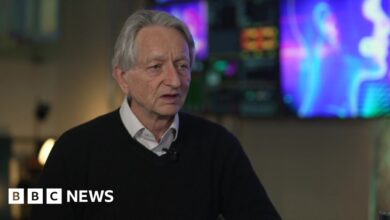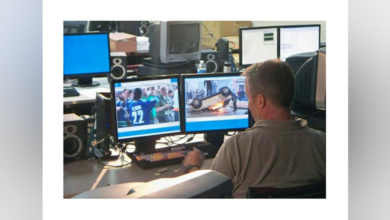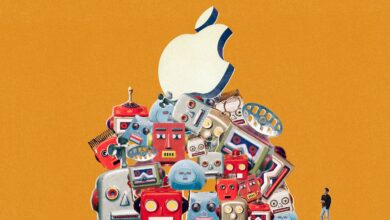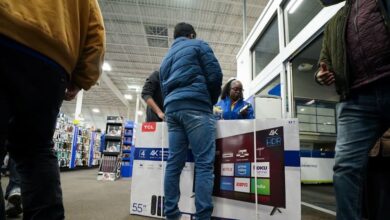Tesla Has a Huge Artificial Intelligence (AI) Opportunity
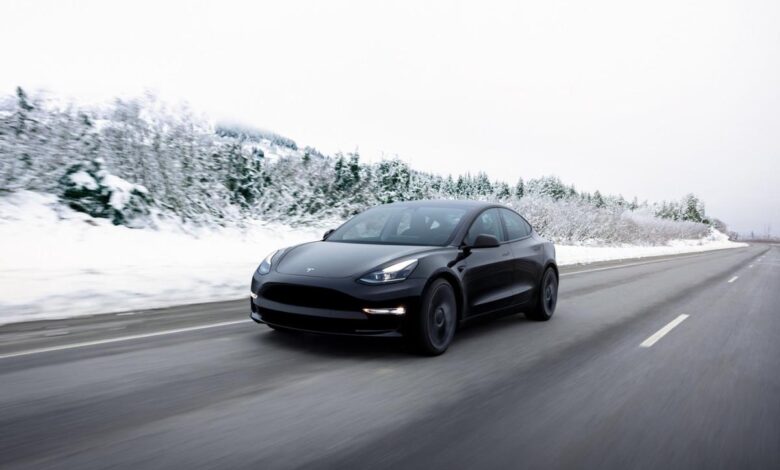
Ark Investment Management CEO Cathie Wood recently said Tesla (NASDAQ: TSLA) stock is the biggest artificial intelligence (AI) opportunity in the world, as the electric vehicle (EV) giant races to build the most advanced autonomous driving software in the industry.
Tesla stock is the largest holding at Ark Invest, which operates 11 exchange-traded funds (ETFs) focused on technological innovation. Ark’s research suggests Tesla could soar to $2,000 per share by 2027, which would represent an upside of 1,022% from where it trades as of this writing.
During a conference call with investors last month, Nvidia (NASDAQ: NVDA) CEO Jensen Huang added to Wood’s bullish stance with a series of comments about Tesla’s recent investments in AI infrastructure. Wall Street calls Huang the “Godfather of AI,” so when he speaks, investors should listen.
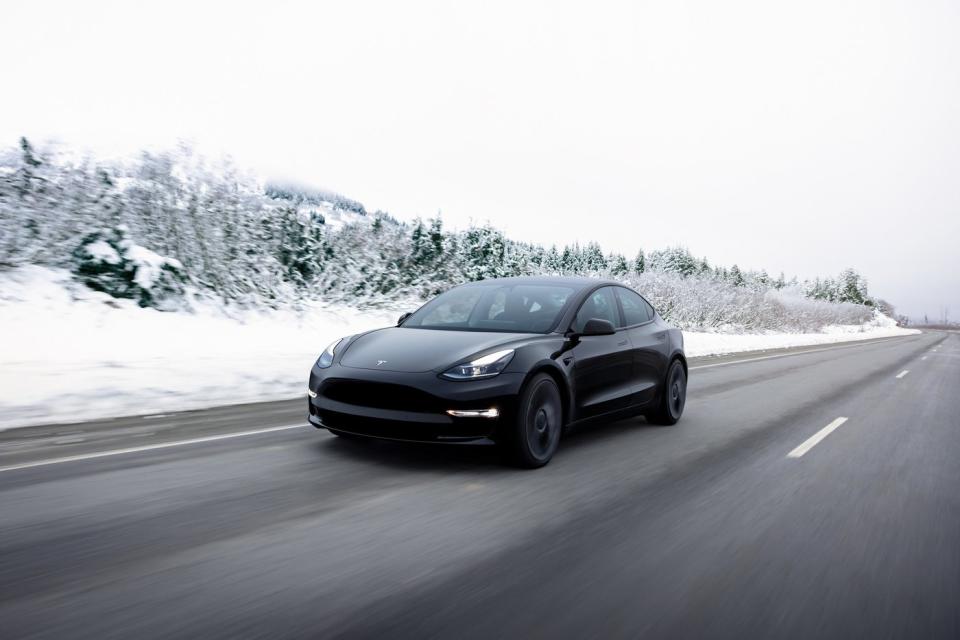
Tesla is a leader in autonomous driving software
Tesla sold 1.8 million EVs in 2023, which was its main source of revenue. But that might change in the future, because each Tesla vehicle could soon become a vessel for the company’s full self-driving (FSD) software, which has the potential to unlock several new revenue streams.
Tesla is one of the leading developers of FSD software. Its latest FSD version 12 remains in beta testing, but customers have used it to complete 300 billion real-world miles, generating valuable data that brings Tesla closer to officially releasing the technology to the wider public. The company also plans to unveil a dedicated autonomous robotaxi (called the Cybercab), a small vehicle designed specifically for ride-hailing, in August.
FSD is an AI-based technology. During Nvidia’s fiscal 2025 first quarter (ended April 28), Huang said Tesla expanded its infrastructure capacity to 35,000 of his company’s H100 graphics processing units (GPUs). In other words, Tesla’s data centers are now fitted with 35,000 extremely powerful chips that have been specifically designed to train AI models. Considering H100 GPUs can sell for up to $40,000 each, that translates to a billion-dollar investment on Tesla’s part.
A report Tuesday from CNBC (citing sources at Nvidia) suggests that Tesla might have procured even more H100 GPUs if not for Musk diverting some of its chip allocation to his other companies X and xAI, which are developing large language models (LLMs) and AI applications of their own. I wouldn’t blame Tesla’s investors for feeling there might be a conflict of interest at play if this news is true.
Nevertheless, Huang says the automotive industry — led by self-driving development — will be Nvidia’s largest data center vertical this year. But why is Tesla spending so aggressively on a technology that doesn’t even have mainstream approval for use on U.S. roads? Because the payoff could be enormous, and that reward inches closer with every advancement in FSD.
Subscriptions, licensing, and ride-hailing are just some of the opportunities
Tesla will sell FSD to its customers on a subscription basis, creating a recurring revenue stream with a high gross profit margin. Plus, Tesla CEO Elon Musk floated the idea of licensing FSD to other car manufacturers, which creates another new revenue stream. Simply put, unlike cars, software can be developed once and sold an unlimited number of times, so it can be extremely lucrative.
Musk also wants to build a ride-sharing network for Tesla customers. He says the average passenger vehicle is only used for 12 hours per week, spending most of its time parked at the owner’s home or workplace. FSD will enable the owner to lend their vehicle to Tesla’s ride-hailing network and earn extra income while they aren’t using it. Tesla will earn a cut of that income for managing the network.
Ark believes the autonomous ride-sharing industry alone could generate $4 trillion in revenue by 2028, and it’s a big reason for the company’s ambitious price target on Tesla stock.
But Tesla faces some near-term headwinds
As I mentioned, Tesla delivered 1.8 million vehicles in 2023. That represented a 38% increase compared to 2022, which was far below Musk’s target to grow sales by 50% annually. Plus, Tesla slashed vehicle prices by 25% (on average) throughout 2023 to support demand, which implies the company expects growth might decelerate further.
Musk didn’t provide a sales forecast for 2024, which is unusual, leaving analysts to speculate that vehicle deliveries will come in at around 2.2 million in 2024. That would be an increase of just 22% from 2023.
Demand appears to be softening across the EV industry, with Ford Motor Company and General Motors each slashing billions of dollars in planned investment from their own electrification plans. Consumers are struggling under the weight of high interest rates, so they are opting for cheaper gas-powered vehicles and hybrids instead of pure EVs.
However, the industry also faces growing competition from low-cost manufacturers. China-based BYD sells an entry-level EV for just $9,700 in its domestic market, and it could soon be available in Europe and the United Kingdom, placing pressure on Western brands that simply can’t compete with such low prices.
Tesla plans to launch an entry-level model of its own next year, which could sell for $25,000. It won’t be cheap enough to challenge BYD, but it might be attractive to low-income consumers who like Tesla’s premium brand.
Should investors buy Tesla stock based on Ark’s forecast?
Nvidia’s comments about FSD certainly validate some of Ark’s bullishness on Tesla stock. But in order for a stock price of $2,000 to become a reality by 2027, the firm says Tesla will have to generate $1 trillion in annual revenue by then — with $440 billion coming from autonomous ride-hailing and robotaxis, which don’t even exist yet.
Considering Wall Street expects the company to generate $98.6 billion in total revenue this year, it will have to grow by 118% annually in 2025, 2026, and 2027 to meet Ark’s forecast. Remember, Musk himself only expects vehicle sales to grow by 50% annually, and the company isn’t even meeting that target right now.
Plus, based on Tesla’s trailing-12-month earnings per share of $2.73 and its current stock price of $178.10, it trades at a price-to-earnings (P/E) ratio of 65.2. That’s more than twice the 31.4 P/E ratio of the Nasdaq-100 technology index. Considering Tesla’s earnings are actually shrinking at the moment due to sluggish sales and price cuts, it’s extremely difficult to justify its current valuation.
Therefore, while it’s entirely possible Tesla stock will reach $2,000 one day, it’s unlikely the necessary pieces will fall into place by 2027. Technologies like FSD and autonomous ride-hailing still need mainstream regulatory approval and, more importantly, widespread adoption from consumers. Until there is tangible progress on both of those fronts, Tesla stock might be too expensive to buy at this price.
Where to invest $1,000 right now
When our analyst team has a stock tip, it can pay to listen. After all, the newsletter they have run for two decades, Motley Fool Stock Advisor, has more than tripled the market.*
They just revealed what they believe are the 10 best stocks for investors to buy right now… and Tesla made the list — but there are 9 other stocks you may be overlooking.
*Stock Advisor returns as of June 3, 2024
Anthony Di Pizio has no position in any of the stocks mentioned. The Motley Fool has positions in and recommends BYD Company, Nvidia, and Tesla. The Motley Fool recommends General Motors and recommends the following options: long January 2025 $25 calls on General Motors. The Motley Fool has a disclosure policy.
Cathie Wood and Nvidia CEO Jensen Huang Agree: Tesla Has a Huge Artificial Intelligence (AI) Opportunity was originally published by The Motley Fool
